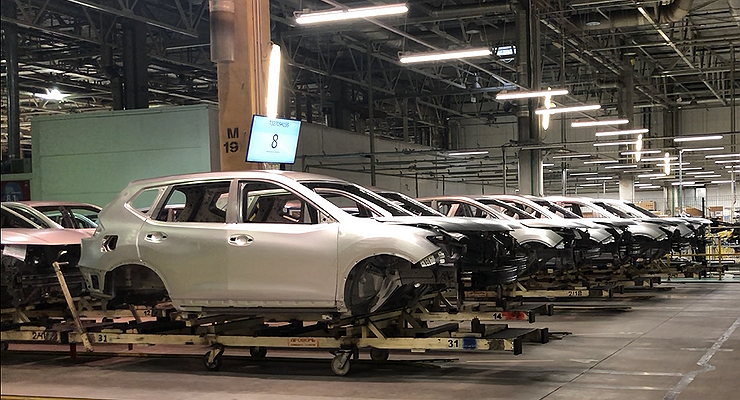Whenever we talk about handling, we are talking about the difference in the behavior of front, rear or all-wheel drive. Meanwhile, the driving characteristics of modern cars are quite close, regardless of the scheme of their transmissions. And the existing differences do not require the driver to need special knowledge and skills: he may not even feel the difference in the behavior of the vehicle due to the type of drive. However, there are some technical solutions that can radically change the car’s handling and make the differences between front, rear and all-wheel drive clear even to a layman. We are talking about a mechanical differential lock, the nuances of which are reminiscent of the AvtoVzglyad portal.
A mechanical differential lock, as many motorists are sure, offers unique advantages over other drivers. Is that just how it really is? Without delving into technical details, let’s say that the principle of its operation is to make the rotational speed equal to the one that does not slip in the event of slippage of one of the wheels of the drive shaft. This allows torque to be implemented more effectively, but has a major impact on handling. Why? Yes, because in its absence, the slip of one wheel is compensated by the good grip of the second. As a result, good contact with the surface is maintained and the car, in whatever form, retains its directional stability.
And as soon as the lock forces the second wheel to turn, we already get slippage of both wheels of the drive shaft. In fact, this is their slip. Of course, contact with the road is not completely lost, but the car begins to behave very differently from what modern drivers are used to. When we talk about front-wheel drive, the natural tendency to undercontrol becomes even more apparent. And it will be possible to compensate for this problem only by fearlessly pressing the gas on the spinning arc. In addition, the level must be such that the thrust of the driving wheels at least compensates for sliding out. This mode is called “ballistic” and requires special skills and character strength from the pilot.
If the lock is equipped with rear-wheel drive, the car becomes overly steerable and actively tries to slide into a skid even with a slight excess of gas. In domestic traffic, this leads to rapid fatigue and constant stress. With four-wheel drive, it gets even worse. If we talk about wheel locks, then the car gets a clear lack of controllability along the front axle, which is compensated by excessive controllability along the rear wheels. As a result, plus or minus, it will be confidently piloted exclusively in gliding. But in the presence of mechanical locks, any type of drive gets the opportunity to accelerate much more dynamically. But this is against the modern concept of safe driving and is absolutely not suitable for ordinary driving.
It is not for nothing that drivers of four-wheel drive SUVs with a hard torque distribution at speeds of 40 km/h and above are advised to switch off the front axle. So wheel lock is actually more of a tool for professionals. But there are fewer of them in our world. And we are increasingly dealing with professional consumers. For which electronically controlled interlocks have been developed. And it was not for nothing that at the beginning of this article we said that most modern cars, regardless of the type of drive, practically do not differ in driving behavior. This effect is achieved only through the use of electronically controlled interlocks, diligently eliminating drivers’ mistakes and ruthlessly suppressing their unprofessional initiative.
A mechanical differential lock, as many motorists are sure, offers unique advantages over other drivers. Is that just how it really is? Without delving into technical details, let’s say that the principle of its operation is to make the rotational speed equal to the one that does not slip in the event of slippage of one of the wheels of the drive shaft. This allows torque to be implemented more effectively, but has a major impact on handling. Why? Yes, because in its absence, the slip of one wheel is compensated by the good grip of the second. As a result, good contact with the surface is maintained and the car, in whatever form, retains its directional stability.
And as soon as the lock forces the second wheel to turn, we already get slippage of both wheels of the drive shaft. In fact, this is their slip. Of course, contact with the road is not completely lost, but the car begins to behave very differently from what modern drivers are used to. When we talk about front-wheel drive, the natural tendency to undercontrol becomes even more apparent. And it will be possible to compensate for this problem only by fearlessly pressing the gas on the spinning arc. In addition, the level must be such that the thrust of the driving wheels at least compensates for sliding out. This mode is called “ballistic” and requires special skills and character strength from the pilot.
If the lock is equipped with rear-wheel drive, the car becomes overly steerable and actively tries to slide into a skid even with a slight excess of gas. In everyday traffic, this leads to rapid fatigue and constant stress. With four-wheel drive, it gets even worse. If we talk about wheel locks, then the car gets a clear lack of controllability along the front axle, which is compensated by excessive controllability along the rear wheels. As a result, plus or minus, it will be confidently piloted exclusively in gliding. But in the presence of mechanical locks, any type of drive gets the opportunity to accelerate much more dynamically. But this is against the modern concept of safe driving and is absolutely not suitable for ordinary driving.
It is not for nothing that drivers of four-wheel drive SUVs with a hard torque distribution at speeds of 40 km/h and above are advised to switch off the front axle. So wheel lock is actually more of a tool for professionals. But there are fewer of them in our world. And we are increasingly dealing with professional consumers. For which electronically controlled interlocks have been developed. And it was not for nothing that at the beginning of this article we said that most modern cars, regardless of the type of drive, practically do not differ in driving behavior. This effect is achieved only through the use of electronically controlled interlocks, diligently eliminating drivers’ mistakes and ruthlessly suppressing their unprofessional initiative.
Source: Avto Vzglyad
Donald Salinas is an experienced automobile journalist and writer for Div Bracket. He brings his readers the latest news and developments from the world of automobiles, offering a unique and knowledgeable perspective on the latest trends and innovations in the automotive industry.














